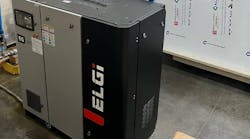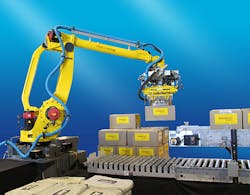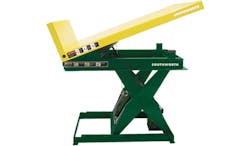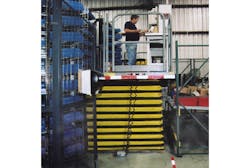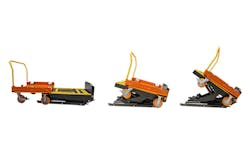A little while back, we spoke with the CEO of Southworth Products, Brian McNamara, about how every company needs to develop its own pathway to automating its material handling processes, as every operation’s budget and needs are different.
The main takeaway is that most companies should formulate a semi-automatic plan, one that mixes the best of human intelligence and dexterity and robots’ virtues of reliability and repetition.
Now that Southworth’s director of business development, Jim Galante, has come back from the ProMat/ Automate show in Chicago held earlier this April, we thought we’d get an update.
“ProMat just confirmed what we in the industry have seen for the last few years: the interest in automation is at an all-time high,” says Galante, who spent the whole week walking the aisles of McCormick Place checking out the latest innovations and trends.
He says there is not just one factor driving this, but one of the biggest might be the lack of available workers.
Due to high turnover, aging, obesity, and Millennial’s perception, material handling managers have a hiring problem. Given the cost to rehire and retrain a warehouse worker is around $7,000, automating that job seems pretty tempting.
“Robots don’t sleep; you can run 24/7 if you want to,” Galante adds.
And unlike twenty years ago, when manufacturers’ lobbies would be filled with prospective applicants, the search for quality workers is a lot more difficult and time-consuming, Galante says.
The longtime ergonomics champion isn’t giving up on human workers, though.
“Automation can’t do it all,” Galante says. “The idea of the age of the dark factory with no lights is long gone. It’s not going to happen.”
This can best be explained by imagining a human and a robot trying to depalletize a load of salad dressing cases off a rack, he says.
“The worker can hunch his way in there, one foot on the pallet, to grab the case,” Galante says.
A robot is out in the aisle, so it can’t step into a rack like a human being,” Galante says. A 50-lb. case doesn’t sound like much, but you would need a 7 or 8-ft. long arm to reach it.”
For a giant like Amazon, which has 395 million SKUs, automating that job would be a no-brainer. For small to mid-size companies, investment costs and ROI need to be considered.
A six-axis robot that fits this description, the FANUC -20iB/25, costs around $50,000, just shy of two years of salary for an entry-level material handler. Then take into account the integration costs, and maintenance and upkeep, and suddenly you realize for all their possible shortcomings like getting injured or sick, people still have their merits.
Photo: FANUC
In addition, robots have trouble with different sized objects. A small business that makes 10,000 items a year might need to package differently for different customers.
Automating comes down to a reasonable ROI, and only in cases that are highly repeatable with little to no variation, Galante advises.
So what do you do if you can’t bring in robots yet?
“Until you can automate, take care of your people,” Galante says.
The way you take care of them is the right equipment, of course.
And by right, we mean not only the gear to make it more ergonomic for workers, but also for robots in a few years.
“The equipment you invest in today to make the human more efficient would ideally be suited for the robot tomorrow,” Galante says. “If I can make a task more efficient for a human, I’ve most likely made it more efficient for a robot.”
Southworth recommends three easy ways to do this.
First is the E-Z Reach Lift and Tilt Table:
Photo: Southworth
Next is the work-assist lift.
Photo: Southworth
Finally, there are cart & dolly positioners.
Photo: Southworth
For more information on its lineup of ergonomic material handling equipment, email Southworth at [email protected].








